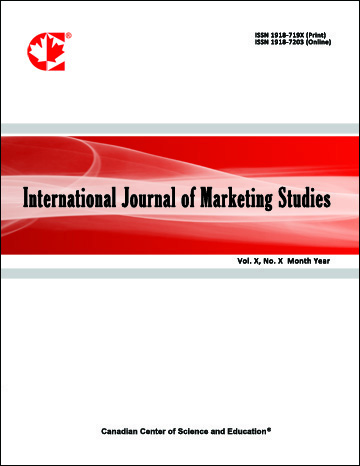Internet Banking Adoption in Jordan: A Behavioral Approach
- Kholoud Al-Qeisi
- Ghaith Al-Abdallah
Abstract
Day after day, many enterprises make use of the Internet and cyber space to reach out to customers everywhere at any time. The banking industry, like other industries, is using the Internet channel to protect its current position against other virtual players who may provide more convenience and lower priced services. Internet banking (IB) is meant to provide 24/7 service for banking customers, yet the electronic channel comes with challenges as well as gains for both bankers and customers. This study aims to identify the important determinants of online behavior, particularly with respect to Internet banking and the technology acceptance research. The different technology acceptance models are discussed thoroughly in the literature review to explain the stages and the foundations that led to the formation of the Unified Theory of Acceptance and Use of Technology (UTAUT). This work aims at investigating the viability of the aggregated technology acceptance model, the UTAUT, in a non-industrial country (Jordan). The research also permits an extension to the model by addressing the impact of web presence on the online behavior, namely website quality perceptions. The contribution of this work lies in several areas of implementation and empirical analyses. This research extended the UTAUT model to account for the online behavior. The extension comprised decomposing the technical sources dimension of the facilitating condition construct of the UTAUT and replacing it with the website design quality structure variable. The current work validates the UTAUT measures as developed by its authors, in addition to supporting the interrelationships among the key constructs in technology acceptance research. The proposed extension to the UTAUT model attempts to capture the impact of website quality perceptions on key constructs, namely performance expectance, effort expectancy and usage behavior. A restrict research methodology was used to test both original and developed hypotheses, the results show that website quality structure does impact usage behavior indirectly, through performance expectancy and effort expectancy. Discussion, conclusion, and further research area are provided based on the results of the research.
- Full Text:
 PDF
PDF
- DOI:10.5539/ijms.v5n6p84
Journal Metrics
Google-based Impact Factor (2021): 1.34
h-index (July 2022): 70
i10-index (July 2022): 373
Index
- Academic Journals Database
- CNKI Scholar
- EconBiz
- Electronic Journals Library
- Excellence in Research for Australia (ERA)
- GETIT@YALE (Yale University Library)
- Harvard Library
- IBZ Online
- Infotrieve
- JournalTOCs
- LOCKSS
- MIAR
- PKP Open Archives Harvester
- RePEc
- ResearchGate
- ROAD
- Scilit
- SHERPA/RoMEO
- Stanford Libraries
- UCR Library
Contact
- Alyssa SunEditorial Assistant
- ijms@ccsenet.org
